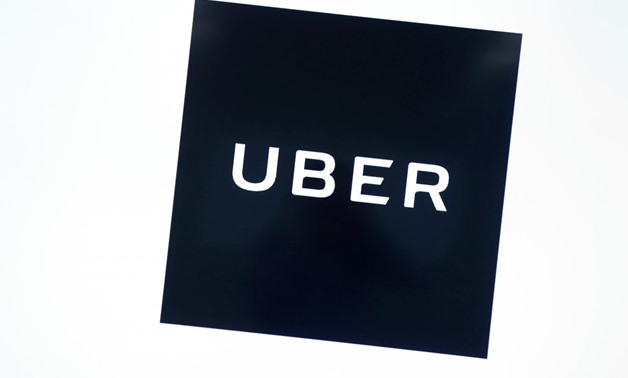
Uber's logo is pictured at its office in Tokyo, Japan, November 27, 2017. REUTERS/Kim Kyung-Hoon
SAN FRANCISCO - 9 May 2019: Over the past two years, Uber Chief Executive Dara Khosrowshahi has used his peace-making and political skills to settle battles with lawmakers and rivals and endear himself to employees who had suffered through a wretched period of corporate scandal.
To Wall Street, it may not matter much. The company’s growth rate slowed to 2.3% in the fourth quarter over the previous quarter, which makes its annual loss of more than $3 billion all the more worrisome.
And ahead of the largest U.S. public stock listing since 2014, Uber executives have cautioned IPO investors that losses could grow amid bitter competition from rivals. The company is set to price shares Thursday and is expected to raise up to $9 billion at a valuation that could top $90 billion.
To find new customers, Uber has tried a range of marketing tactics, including paying media personalities such as talk radio host Dave Ramsey to discuss the company on air, a person with knowledge of the matter told Reuters. And it is challenging the law from Chile to South Africa to grow market share.
But digging out of a $3 billion hole will not be solved simply by finding more Uber passengers, say analysts, investors, fund managers and former Uber employees.
“There is no evidence the core ride-hailing business is profitable,” said Steve Blank, a Silicon Valley entrepreneur, startup adviser and Stanford University professor. The question becomes, “Where is the next billion dollars coming from?”
Analysts and Uber insiders point to a possible answer: its treasure trove of trip data.
Uber has “a wildly successful data collection on who uses it and how they use it and where they go,” said a person familiar with the business, who declined to be named. All of this data “can become profitable,” the person said.
A spokesman for Uber declined to comment. In its IPO filing, Uber says that adding new riders and getting passengers to make more frequent trips are key to improving its growth rate and profit margin.
UBER’S DATA PLAY
Uber has a fraught history with data collection. It has used geolocation data to spy on customers and journalists, deceive regulators and recruit drivers away from competitors. The company paid $148 million in a U.S. settlement last year over the cover-up of a 2016 data breach, and the terms included a revamp of Uber’s data security practices.
Current and former Uber employees and analysts say the company is better positioned now to build a legitimate business from its vast quantity of data.
The longer-term opportunity for Uber involves extracting value from that data rather than “simply the economics of traditional ride sharing,” said Mark Hargraves, head of global equities at AXA Investment Managers.
Exactly what that data business ultimately looks like remains to be seen. But data collection and machine learning are vital for Khosrowshahi to realize his vision for Uber as the “Amazon for transportation,” inferring where people want to go and how they want to move around much like online retailer Amazon.com predicts customers’ future purchases.
That could make the company more efficient and sell more rides, driving up margins.
Or, Uber could do deals with partner companies such as consumer finance firms to roll out new products and services that are targeted to specific customers based on the data Uber has collected. Last month, Uber announced a collaboration with payments company PayPal Holdings to expand Uber’s digital wallet offerings.
Under Khosrowshahi, Uber has expanded and elevated its data science teams, according to current and former employees. He better integrated them with the rest of the company, which led to improved machine learning throughout.
Privacy concerns remain, however. In March, drivers in Britain accused Uber of violating a European data protection law.
Khosrowshahi hired the company’s first chief privacy officer, Ruby Zefo, to set clear standards for data privacy, “drawing red lines” on what rider data is collected and how it is shared, said a current employee close to the security team. Zefo presents on these matters to the board of directors several times a year, reflective of the higher status Khosrowshahi has given the team.
Uber has other ideas for how it can get to profitability, pointing investors to its mobility services including scooters, food-delivery and freight-hauling. But the food-delivery service loses money and the freight-hauling business is heavily subsidized.
In its IPO filing, Uber also named “pursuing targeted investments and acquisitions” as key to its growth strategy. As a public company, Uber will have more equity, debt and cash at its disposal than startups do. That could enable it to make acquisitions that could turbocharge revenue growth - not unlike how Alphabet Inc found new lucrative businesses by buying Android, YouTube and Nest Labs.
As CEO of travel booking company Expedia, Khosrowshahi gained a reputation as a savvy dealmaker, completing 15 acquisitions during his 12-year tenure, according to PitchBook Inc data. His largest at Uber has been the $3.1 billion purchase of Middle Eastern rival Careem, which could help stem Uber’s losses in the region but does not solve the underlying profitability problem.
“I think Uber has an enormous number of moves as a public company,” Blank said. “They have a CEO who is exactly the right guy for the transition to Wall Street. All they could do now is screw it up.”

Comments
Leave a Comment